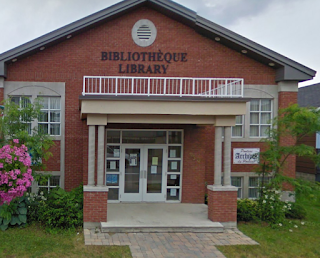2,648 miles
Aug 11 – Crossing
the Ottawa River on Chenaux Road, crossing (virtually, of course) from Ontario
into Québec, I wondered whether my rusty French language skills would be
helpful in this francophone land. I had
studied French in high school and college, but never felt at home using
it. (Having a Parisian hotel custodian
correct my pronunciation of a simple “Merci” did nothing to boost my
confidence. On a long ago (real) trip to
Québec, I got a much friendlier reception for my efforts.)
When my virtual trip was stymied by my
medical crisis in early June, I began to brush up on my old French language
skills to remind myself that I would soon, or eventually, be entering Québec. I found an online language program, DuoLingo, to help me.
Reality
check moment: This is a virtual
trip. Why do I think I would need to
know the language? Well, remember Maple,
Wisconsin, and the Messer Trail? Remember
Yellek? Communicating by e-mail with the tribal
leader Bob Goulais enhanced my understanding of the complex relationships of
Anishinaabe people! And knowing what
words to choose in those communications (“First Peoples” in Canada, specific
tribe & band designations) showed enough knowledge & respect to get me
a thoughtful response. I know that Québecois
calls for autonomy within Canada are based on language and cultural
distinctions. I want to be able to make
some connection to the people, so I was hoping that my brushed-up French would
be adequate.
At the
Chenaux Rapids, the Ottawa River is managed by a dam and a hydroelectric power
station. Two islands in the river help
the road to get across in stages.
I arrived in
Shawville via Google Street Views. One
friendly house on the main street welcomes me with a rocker on the front porch
and a “Bienvenue” sign.
Many of the
houses share a distinctive style of architecture: 2-story red brick with a
porch and railings and partial façade of white-painted wood.
When I
continued to explore into downtown Shawville, I saw Canadian flags galore! And a few flags of Québec. I guessed from this photo that Google Street
Views captured Shawville preparing for Canada Day (July 1st).
The public
bibliothèque (library) and the hôtel de ville (city hall) were clearly labelled
in French and English.
The stop signs
were bilingual, and even included this attractive sign underneath to indicate a
4-way stop intersection. It reminds me
of a gingham tablecloth or a quilt pattern.
 |
| French & English school busses |
When I
researched Shawville, I found out that it is not Francophone, as I had expected
as soon as I crossed the provincial border.
It is overwhelmingly English-speaking and Protestant, settled in the mid-19th
century by Protestant Irish (probably Northern Irish) immigrants. For decades, the residents have been in
conflict with the government of Québec and its language police. Yes, Québec has language police!
In 1977, the government of Québec declared that
French would be the only official language of the province, and established the
Office Québécois de la Langue Française (Québec Office of the French Language).
As
summarized by an article in Wikipedia, the fundamental French language rights
in Québec are:
1.
The right to have the civil administration, the
health services and social services, the public utility enterprises, the
professional corporations, the associations of employees and all enterprises
doing business in Québec communicate with the public in French.
2.
The right to speak French in deliberative
assemblies.
3.
The right of workers to carry on their
activities in French.
4.
The right of consumers to be informed and served
in French.
5.
The right of persons eligible for instruction in
Québec to receive that instruction in French.
This law
followed more than a century of English-speaking domination in government and
society, it caused quite an upheaval at the time, and there seems to be some
belligerence in its enforcement.
In 1999, an
inspector visited the town to photograph business signs that were not in
compliance with the language law (French only, or bilingual with French more
prominent than English). Business owners
were unwilling to pay for extra signage that did not serve their customers’
needs, and had been receiving notices of violations and fines due. They were fed up with the harassment. Several of them confronted the inspector,
followed her around, and told her to stop taking pictures. The mayor even joined the confrontation in
support of his constituents, and the inspector did leave town.
Seventeen years
later, how are the French-English-speaking relations developing? How is the Province du Québec fitting into the
nation of Canada as a whole? I was able
to read some of the Wikipedia page about Québéc in French! It made the point that the official language
of Québec is “français québécois”, which is distinct from the language of any
province in France, because it was influenced by social and commercial
interaction with Algonquins in the New World.
This cross-cultural interaction
is a point of pride for them, but the invasion of “franglais” (French-English)
patois into the province has been resisted by prescriptivist compilers of
dictionaries and the language police.
 |
| St. Jean Baptiste Day festival |
Apparently political
separatism is no longer an urgent goal for the Québécois citizens, but they are
not generally fans of Canada Day, and many prefer to celebrate their own “national
festival” of St. Jean Baptiste a week earlier.
So many
discoveries for one day!
info: Wikipedia.com
Québécois
separatism: http://www.huffingtonpost.ca/2012/07/01/canada-day-quebec-_n_1640823.html
Shawville
confrontation: http://vigile.quebec/archives/996/shawville.html
images: Google Street Views








No comments:
Post a Comment